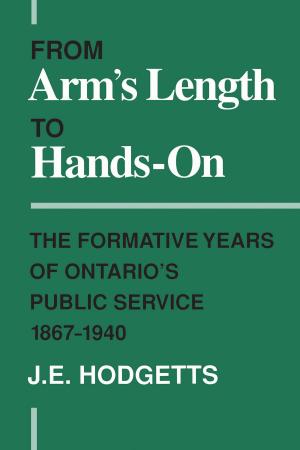Hired Hands
Labour and the Development of Prairie Agriculture, 1880-1930
Nonfiction, History, Americas, North America, Canada| Author: | Cecilia Danysk | ISBN: | 9781442655317 |
| Publisher: | University of Toronto Press, Scholarly Publishing Division | Publication: | December 15, 1995 |
| Imprint: | Language: | English |
| Author: | Cecilia Danysk |
| ISBN: | 9781442655317 |
| Publisher: | University of Toronto Press, Scholarly Publishing Division |
| Publication: | December 15, 1995 |
| Imprint: | |
| Language: | English |
Farm workers were central to the development of Canada's prairie West. From 1878, when the first shipment of prairie grain went to international markets, to 1929, when the Great Depression signalled the end of the wheat boom, the role of hired hands changed dramatically. Prior to World War One, hired hands viewed themselves and were treated in the rural community as equals to their farmer employers. Many were farmers in training, informal apprentices who worked for wages so they could accumulate the capital and experience needed to secure their own free 160-acre parcels of land. In later years, as free lands were taken, hired hands increasingly faced the hkehhood of remaining waged labourers on the farms of others. They became agricultural proletarians.
In this first full-length study of labour in Canadian prairie agriculture during the period of settlement and expansion, Cecilia Danysk examines the changing work and the growing rural community of the West through the eyes of the workers themselves. World War One was a catalyst in bringing into focus the conflicting nature of labour-capital relations and the divergent aims of workers and their employers. Yet, attempts at union organization were unsuccessful because most hired hands worked alone and because governments assisted farmers by stifling such attempts. The workers' greatest form of workplace control was to walk off one job and find another.
Previously published by McClelland & Stewart
Farm workers were central to the development of Canada's prairie West. From 1878, when the first shipment of prairie grain went to international markets, to 1929, when the Great Depression signalled the end of the wheat boom, the role of hired hands changed dramatically. Prior to World War One, hired hands viewed themselves and were treated in the rural community as equals to their farmer employers. Many were farmers in training, informal apprentices who worked for wages so they could accumulate the capital and experience needed to secure their own free 160-acre parcels of land. In later years, as free lands were taken, hired hands increasingly faced the hkehhood of remaining waged labourers on the farms of others. They became agricultural proletarians.
In this first full-length study of labour in Canadian prairie agriculture during the period of settlement and expansion, Cecilia Danysk examines the changing work and the growing rural community of the West through the eyes of the workers themselves. World War One was a catalyst in bringing into focus the conflicting nature of labour-capital relations and the divergent aims of workers and their employers. Yet, attempts at union organization were unsuccessful because most hired hands worked alone and because governments assisted farmers by stifling such attempts. The workers' greatest form of workplace control was to walk off one job and find another.
Previously published by McClelland & Stewart















